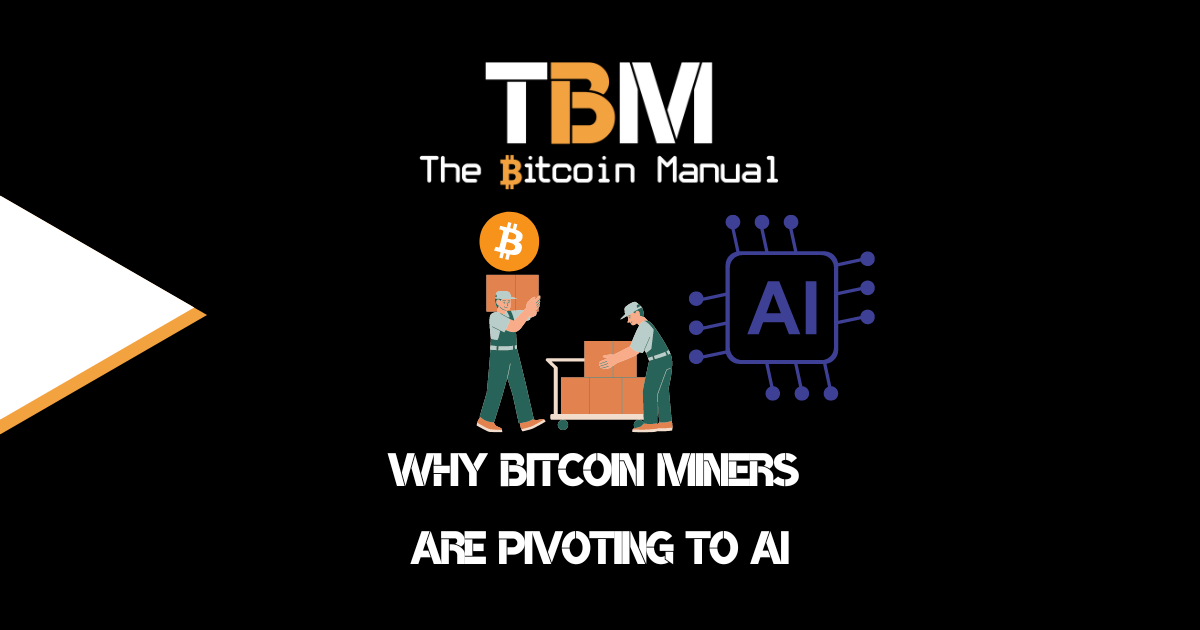Bitcoin mining and artificial intelligence (AI), while both being tech sector businesses, seem like entirely different beasts on the surface.
- One is fueled by complex algorithms that secure digital currency and back an immutable ledger.
- The other harnesses vast computational power to create text prompts, chatbots, recommendation engines and image generation, well, at least thus far, as the current iteration of AI tries to find product market fit.
As AI investment and companies have grown in the last four years, we’ve seen its hunger for resources grow exponentially. According to reports by the International Energy Agency, current data centre energy usage stood at around 460 terawatt hours in 2022. It could increase to between 620 and 1,050 TWh in 2026—equivalent to the energy demands of Sweden or Germany, respectively.
Sound familiar?
The need for GPUs and storage has not only been a catalyst for NVIDIA’s supercycle growth in stock price, but data centres have also been a significant benefit of the money flowing into the space to secure the necessary computation.
AI needs industrial-scale resources, and like Bitcoin miners, data centres are also seeking to secure as many GPUs as possible and trying to secure favourable energy costs. Finding the cheapest way to spin up computing power is a practice Bitcoin miners have refined over the last decade, and this has seen a fascinating convergence happening.
Large Bitcoin miners are starting to diversify and reallocate floor space and hardware acquisition away from ASICs and adding what they feel is a complementary service that supports the ever-growing needs of the AI industry.
This shift marks a strategic move for miners, driven by a confluence of factors within the Bitcoin and AI landscapes.
The Cryptocurrency Conundrum: Fluctuating Profits and Evolving Technologies
Bitcoin mining, the process of verifying transactions and securing the Bitcoin network, relies on specialised computers called Application-Specific Integrated Circuits (ASICs).
These machines perform the complex calculations required to solve cryptographic puzzles, and in return, miners are rewarded with Bitcoin.
However, mining’s profitability hinges on the price of Bitcoin and the miner’s ability to manage their balance sheet.
When you have fixed costs like debt and salaries and variable expenses like maintenance and energy bills that you need to meet monthly, and the coins you secure each month are not servicing your burn rate and extending your runway, you’ll likely have to close up shop.
Mining becomes less lucrative as more miners join the fight for rewards. When the price dips and the mining rewards are half each four-year epoch, and the price hasn’t adjusted, it can cripple many miners who have fixed costs they need to service. Further complicating matters is the evolving nature of blockchain technology.
Repurposing Ethereum deadwood
Some miners were not only Bitcoin-focused but also merged mine coins compatible with ASICs, while others split their operations between ASIC-run proof of work chains and GPU-run proof of work chains.
The Ethereum network, the second-largest cryptocurrency by market capitalisation, recently transitioned from a proof-of-work (PoW) consensus mechanism, heavily reliant on mining, to a proof-of-stake (PoS) system.
This shift rendered the powerful graphics processing units (GPUs) used for Ethereum mining obsolete, leaving miners with expensive hardware and dwindling profits.
If those miners couldn’t sell off their sizable exposure to GPUs, they needed a new way to monetise them. Mining other coins might have offered a way out, but the smaller the coin’s market cap, the lower the liquidity and the volatility you need to manage.
GPU miners looking for an alternative revenue source are now directing that competition to the hungry, hungry hippos that are AI companies funded by near-bottomless venture funding; the pivot to AI for now offers a viable revenue source.
The rise of AI: A thirst for computational power
While interest in Bitcoin ebbs and flows, there are times of plentiful feasts culminating in bull runs with massive blow-off tops where miners can make their best returns.
These bull runs can attract overinvestment, and when the eventual correction and bear market arrive, they bring red candles of maximum pain for miners.
On the other hand, the field of AI is experiencing explosive growth.
Training complex AI models, like large language models or self-driving car algorithms, requires immense computational power.
These models devour vast datasets, performing intricate calculations to learn and improve. This insatiable demand for processing power presents a unique opportunity for miners.
Right now, AI companies are backed by deep pockets and tech giants, such as Microsoft, Google, and Meta. These companies are throwing billions at these LLMs and generative AI models, and they’re not shy about paying a premium for access to computation.
A match made in the cloud
The convergence between miners and AI stems from a shared need: high-performance computing.
Bitcoin miners already possess the necessary infrastructure:
- Cooling Systems: Mining generates immense heat, and miners have sophisticated cooling systems in place to maintain optimal hardware performance. These systems can readily adapt to the heat generated by AI workloads.
- Secure Facilities: Miners operate in secure facilities with robust power grids and internet connectivity, which is ideal for housing sensitive AI projects.
Beyond hardware
The benefits go beyond just hardware. Miners often have access to:
- Cheap Energy: Many miners operate in regions with abundant and affordable energy sources, which is crucial for the power-hungry nature of AI.
- Scalability: Mining operations are designed to scale easily, adding or removing capacity based on demand. This flexibility caters to the fluctuating needs of AI projects.
- Load Balancing: AI workloads like mining can be paused or scaled down during peak energy demands, helping to stabilise the grid.
Challenges and opportunities
This newfound synergy between miners and AI presents both challenges and opportunities:
- Competition and Collaboration: Large cloud providers like Amazon Web Services (AWS) are also vying for a share of the AI computing market. Miners may need to compete by offering competitive pricing and specialised services. Alternatively, collaboration between miners and cloud providers could create a more robust and efficient AI computing ecosystem.
- Evolving Regulations: The regulatory landscape surrounding both cryptocurrency and AI is still developing. Miners need to stay abreast of regulations that might impact their ability to offer AI computing services.
The future of the hash: A symbiotic relationship
In June, Core Scientific—a public miner that recently emerged from bankruptcy following the 2022 crypto crash—announced it would host over 200 megawatts of GPUs (graphic processing units, which power AI training and operation) for the AI startup CoreWeave.
In the same month, bitcoin miner Hut 8 received a $150 million investment from Coatue Management to build artificial intelligence infrastructure.
The burgeoning relationship between Bitcoin miners and AI represents a win-win situation as it stands now.
Miners can diversify their revenue streams and mitigate the risks associated with volatile cryptocurrency markets. At the same time, AI companies gain access to reliable, scalable, and cost-effective computing power.
Pumping the stock
AI is the latest stock-pumping buzzword; if you want to increase your equity interest, you must add some AI play.
Bitcoin miners, who tend to have an issue raising equity during the bear markets, will likely look to offload some of their stock while the appetite for AI-adjacent investments is the market’s prized pony.
A smoke screen for those filthy miners
Bitcoin miners have been the big baddie of green PR. You’ve likely heard how harmful large-scale mining is. If it’s generating noise pollution, it’s evaporating swimming pools filled with water to secure a block, and it’s on course to boil the oceans.
Despite Bitcoin miners’ best efforts to use “green” energy, no amount of bending the knee will be enough because these critics don’t see the value in what miners do with that energy.
Hence, any energy miners use is too much despite paying for at an agreed rate with producers.
AI, however, with its potential applications, is a far more palatable sell for greens and regulators. The success of this collaboration between miners and AI companies could get policymakers off their backs.
It’s harder to fling your accusations at Bitcoin miners if they contribute resources to produce your silly climate modelling reports, right?
AI could be a poisoned chalice
If you’re not completely engrossed in the Silicon Valley AI thread bros on Twitter, touting the future productivity gains being near infinite, then you have this funny feeling that this is getting pretty bubbly.
If that bubble pops, demand for AI computing power could fall sharply.
The data centre market already has big players with experience and efficient AI-optimised infrastructure, which leaves Bitcoin miners at a competitive disadvantage.
Why would OpenAi, for example, look to purchase resources from a miner when they have sweetheart deals with Azure?
Miners who invested heavily in AI infrastructure could be left with underutilised equipment, and if they can’t find a good use for it, that’s negative capex.
If you operate on two fronts and have to handle fluctuations in two highly volatile markets, you could be out-competed.
Have you ever heard of jack of all trades, master of none?
Garage miners, here’s your call to action
The burgeoning relationship between large-scale Bitcoin miners and AI presents a fascinating and dynamic chapter on how the hash rate is produced at scale.
Lage miners are always a potential central point of failure.
If this pivot to AI encourages big players to divest from Bitcoin, we could see a flood of second-hand ASICS hit the market, driving down the price and dispursing some hash rate towards smaller operations or even individual home miners.




